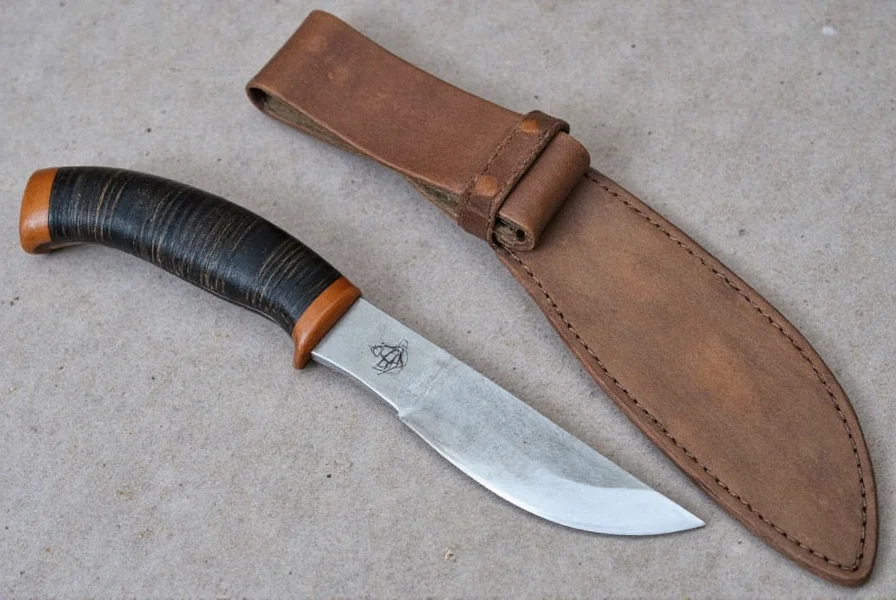Originating from the Iñupiaq word "ullu" meaning she cuts, the uluva represents more than just a practical kitchen implement—it embodies cultural identity,传承, and women's knowledge systems across Arctic Indigenous communities. Unlike Western knives with straight blades, the uluva's distinctive curved design allows users to rock the blade while maintaining contact with the cutting surface, creating an efficient motion for processing food and materials.
Historical Development of the Uluva
Archaeological evidence suggests uluva knives have been used in the Arctic for at least 5,000 years. Early versions featured blades crafted from slate, bone, or ivory, with handles made from wood, antler, or walrus tusk. The traditional uluva design evolved specifically to address the practical needs of Arctic living—processing marine mammals, preparing hides, and handling frozen foods in extreme conditions.
When Russian and American traders arrived in Alaska, metal blades gradually replaced traditional materials, improving the tool's durability while maintaining the essential curved shape. Despite these material changes, the fundamental design principles of the uluva have remained remarkably consistent through generations, demonstrating its functional perfection for Arctic subsistence living.
Anatomy of a Traditional Uluva
| Component | Traditional Materials | Modern Adaptations |
|---|---|---|
| Blade | Slate, bone, ivory | Stainless steel, carbon steel |
| Handle | Walrus tusk, antler, wood | Synthetic materials, hardwood |
| Fastening | Rawhide, sinew | Rivets, epoxy |
| Size Range | 4-10 inches | 3-12 inches |
The uluva's blade curvature creates a natural rocking motion that reduces wrist strain during repetitive cutting tasks—a critical ergonomic advantage when processing large quantities of food or materials. Traditional uluva knives typically measure between 4-10 inches in blade length, with larger versions used for butchering and smaller ones for detailed food preparation.
Cultural Significance in Indigenous Communities
In Iñupiat and Yup'ik cultures, the uluva represents more than a tool—it symbolizes women's knowledge, skill, and responsibility within the community. Girls traditionally received their first small uluva around age seven, marking an important developmental milestone. The process of making and using an uluva transmits cultural knowledge across generations, connecting women to their ancestors through shared techniques and practices.
Among many Indigenous Alaskan communities, the uluva remains a powerful cultural symbol. Contemporary Indigenous artists incorporate uluva imagery into jewelry, prints, and other art forms as expressions of cultural identity. Some communities continue the tradition of gifting uluva knives during significant life events, maintaining the tool's ceremonial importance alongside its practical uses.
Traditional and Modern Applications
Historically, Indigenous women relied on the uluva for virtually all food preparation tasks—from skinning seals and butchering caribou to chopping frozen fish and preparing berries. The uluva's design proved equally effective for non-culinary tasks like scraping hides, cutting sod for construction, and crafting materials.
Today, many Alaska Native women continue using uluva knives in daily life, blending traditional knowledge with contemporary needs. Modern uluva designs often feature stainless steel blades while maintaining the essential curved shape. Some Indigenous chefs have gained recognition for incorporating traditional uluva techniques into contemporary culinary practices, demonstrating the tool's enduring relevance.
Preserving Uluva Traditions
As with many Indigenous cultural practices, uluva knowledge faced erosion during periods of forced assimilation. However, cultural revitalization efforts have strengthened in recent decades. Community programs across Alaska now teach uluva making and usage to younger generations, ensuring these skills continue.
Museums and cultural centers play crucial roles in preserving historical uluva examples and associated knowledge. The Alaska Native Heritage Center in Anchorage, for example, offers workshops where elders teach uluva techniques to community members. These preservation efforts recognize that maintaining traditional tool knowledge supports broader cultural continuity and Indigenous sovereignty.
Frequently Asked Questions
What's the difference between an uluva and a regular kitchen knife?
The uluva's distinctive curved blade creates a rocking motion that keeps the entire edge in contact with the cutting surface, unlike straight-bladed Western knives that require a chopping motion. This design reduces wrist strain during repetitive tasks and allows for more efficient processing of frozen or tough materials common in Arctic environments.
Is the uluva used exclusively by women in Indigenous Alaskan cultures?
Traditionally, the uluva has been primarily associated with women's activities in Iñupiat and Yup'ik cultures, though men sometimes used smaller versions for specific tasks. The tool represents women's knowledge systems and responsibilities in food preparation and material processing. However, in contemporary contexts, people of all genders use uluva knives for their practical design advantages.
Can I purchase an authentic traditional uluva?
Yes, many Alaska Native artists create authentic uluva knives using both traditional and modern materials. When purchasing, look for pieces made by Indigenous Alaskan artisans through cultural centers, Native-owned businesses, or verified online marketplaces that support Indigenous creators. Authentic pieces often include documentation of the maker's tribal affiliation and may incorporate traditional design elements specific to particular regions.
How do I properly maintain and sharpen an uluva knife?
Traditional stone-bladed uluva required different maintenance than modern steel versions. For contemporary uluva knives, maintain the original bevel angle (typically 20-25 degrees) when sharpening. Many users prefer sharpening stones over mechanical sharpeners to maintain the curved edge profile. After use, clean thoroughly, dry completely, and store in a protective sheath to prevent damage to the blade and ensure safety.











 浙公网安备
33010002000092号
浙公网安备
33010002000092号 浙B2-20120091-4
浙B2-20120091-4